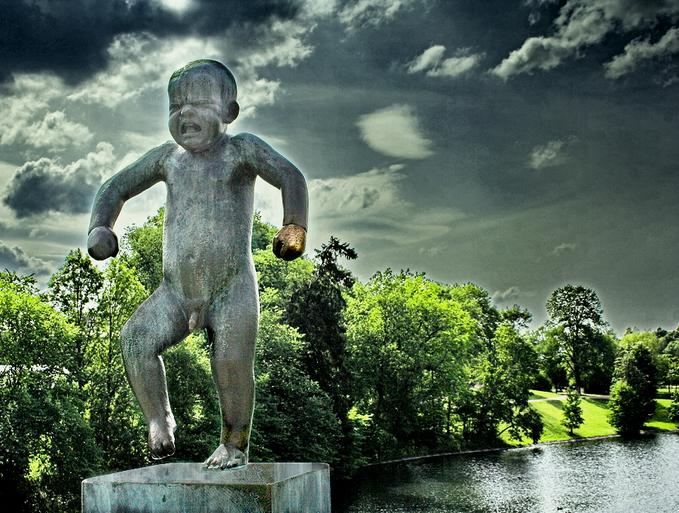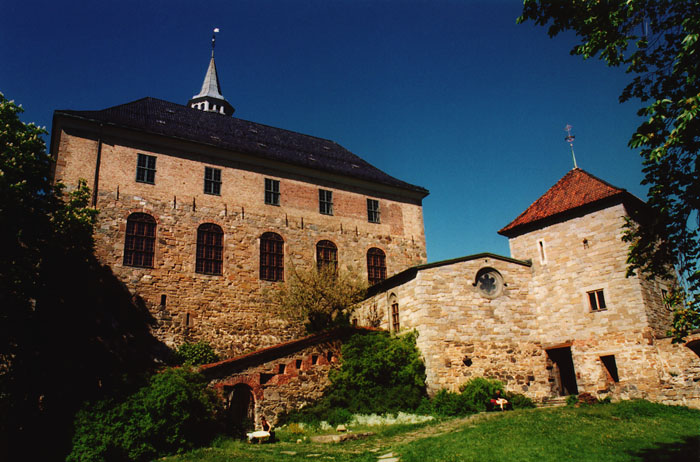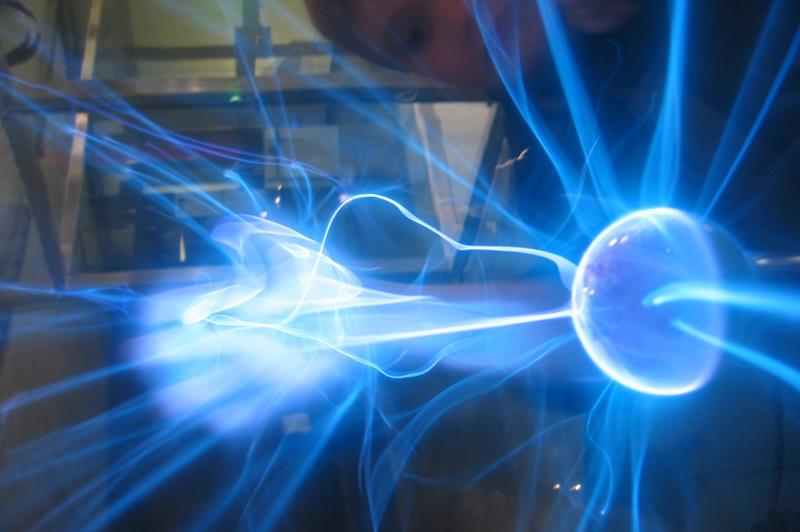Norway is known for the vikings. It is known for amazing scenery and great beer. Oslo, its largest city is a hub for both beauty and culture, ranging from fabulous top notch art and historical museums to great pubs, breweries, restaurants and cafes. Below is our top ten list for Oslo. Remember that the city is known to be expensive, so bear that in mind for planning purposes, especially if you’re a serious foodie and want to dive deep into Norweigan specialties in and around the city. Below focuses more on the cultural part of Oslo, from parks and museums to art and folk.
Vigeland Park: It seems no one goes to Norway without visiting Vigeland Park, since everyone is eager to see the 212 bronze and granite sculptures created by the man himself, Gustav Vigeland. The park is part of Frogner Park and Vigeland is broken down into six main areas: The Main Gate, The Wheel of Life, The Fountain, The Children’s Playground, The Monolith Plateau and The Bridge. Vigeland’s pieces include sculptures of lovers, elderly couples and downtrodden beggars. Vigeland is located about two miles northwest of the city center (you can take Bus 20 and tram 12 from the Majorstuen station if you decide to go with the T-Bane. There is no charge for admission and it’s apparently open 24 hours every day.
Munch Museum (Munch-museet): The Munch Museum has the work of Norway’s most renowned painter, Edvard Munch, someone I have always loved ever since I dove deep into art when I lived in Amsterdam way back when. One of several versions of his masterpiece, The Scream, is housed at the museum. You can walk to the museum from the Tøyen T-Bane station. Admission is $12 USD (75 kroner) for adults and $7 (or 40 kroner) for seniors, students and children over age 7 (those under age 7 may enter for free).
Oslo’s Boroughs: Oslo is a modern and diverse city, and brings something special to the table, so be sure to check out the burbs – they can all be reached on foot or with a single ride on public transportation.
Akershus Castle and Fortress: If you’re coming straight from the states and want a historical fix, start with a visit to Akershus Castle and Fortress, which has been around for over 700 years. Way back when, the fortress was obviously used to defend Oslo from foreign invaders and for a stint, it was home to a prison as well. Be sure to check out Castle Church while you’re here. You can go to a service if interested from the middle of March to June and then again in August until the first Sunday in Advent Sunday. Entrance fee to the castle and fortress is about $11-12 to do it properly.
Ringnes Olsenter (Beer Museum): Beer tastings and other beer-related activities for groups, although for the latter, you need to book well in advance.
Norweigan Folk Museum: The Norwegian Folk Museum is one of Europe’s largest open-air museums, with 155 traditional houses from all parts of Norway and a Stave Church from the year 1200. The museum’s indoor exhibits show traditional handicraft items, folk costumes, Sami culture, weapons, toys, pharmaceutical history and other historic artifacts. In summer you can experience lefse baking, horse and carriage rides, feeding of the animals, guided tours, handicraft demonstrations and much more. The museum hosts events such as folk dancing, exhibitions, baking, church services, markets, and arts and crafts activities.
The Ibsen Museum: The Ibsen Museum is the last residence of Norwegian playwright, Henrik Ibsen who spent the last 11 years of his life here and where he penned two of his most acclaimed plays, When We Dead Awaken and John Gabriel Borkman. The museum is about 300-350 feet away from the Nationaltheatret T-Bane station. It is about $14 to visit the museum.
Oslo Mikrobryggeriet: This is the place to go to drink beer – they have a wide selection of home brews, so get ready to drink with the Norweigans. It has a great reputation among travelers and locals alike.
Kon-Tiki Museum: The Kon-Tiki Museum takes you into the world of the renowned Norwegian adventurer, Thor Heyerdahl, where you can see his original boats and rafts, and learn about the history of his escapades.
The Norwegian Museum of Science and Technology: (Norsk Teknisk Museum) is the national museum for technology, industry, science and medicine. The museum has over 20 permanent and temporary exhibitions about energy, oil, industry, medicine, airplanes, cars and trains. You can explore natural science and technological principles in the areas of energy, physical phenomena, the body, mathematics and the universe. The Robot Centre and The Planetarium are both found here. The National Museum of Medicine explains how people’s lives have changed over the last 150 years through improvements in public health, medicine and healthcare. The museum is integrated in the Museum of Science and Technology. Norwegian name: Norsk Teknisk Museum.
National Museum of Art, Architecture and Design: The National Museum of Art, Architecture and Design is a merger of four formerly separate museums: the Norwegian Museum of Architecture, the Museum of Decorative Arts and Design, the Museum of Contemporary Art and the National Gallery. Norwegian art from the 1800s and 1900s is the focus, with approximately 3,500 paintings and 900 sculptures are included in this museum so allow enough time to go through the galleries.

Renee Blodgett is the founder of We Blog the World. The site combines the magic of an online culture and travel magazine with a global blog network and has contributors from every continent in the world. Having lived in 10 countries and explored nearly 80, she is an avid traveler, and a lover, observer and participant in cultural diversity.
She is also the CEO and founder of Magic Sauce Media, a new media services consultancy focused on viral marketing, social media, branding, events and PR. For over 20 years, she has helped companies from 12 countries get traction in the market. Known for her global and organic approach to product and corporate launches, Renee practices what she pitches and as an active user of social media, she helps clients navigate digital waters from around the world. Renee has been blogging for over 16 years and regularly writes on her personal blog Down the Avenue, Huffington Post, BlogHer, We Blog the World and other sites. She was ranked #12 Social Media Influencer by Forbes Magazine and is listed as a new media influencer and game changer on various sites and books on the new media revolution. In 2013, she was listed as the 6th most influential woman in social media by Forbes Magazine on a Top 20 List.
Her passion for art, storytelling and photography led to the launch of Magic Sauce Photography, which is a visual extension of her writing, the result of which has led to producing six photo books: Galapagos Islands, London, South Africa, Rome, Urbanization and Ecuador.
Renee is also the co-founder of Traveling Geeks, an initiative that brings entrepreneurs, thought leaders, bloggers, creators, curators and influencers to other countries to share and learn from peers, governments, corporations, and the general public in order to educate, share, evaluate, and promote innovative technologies.














